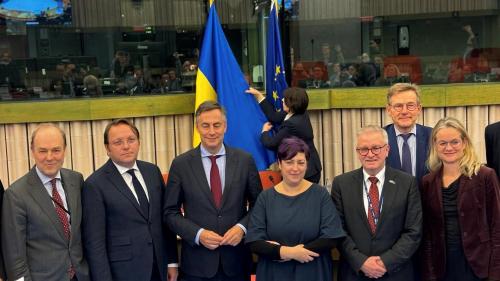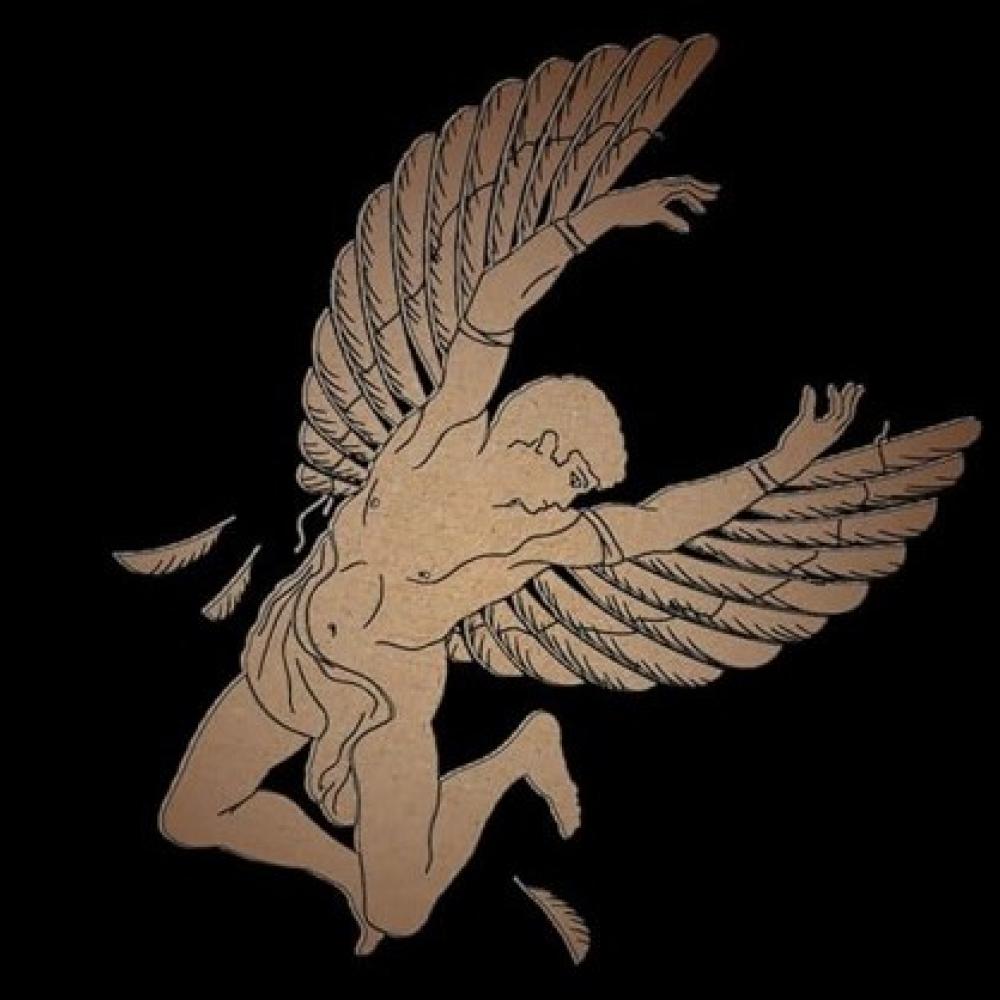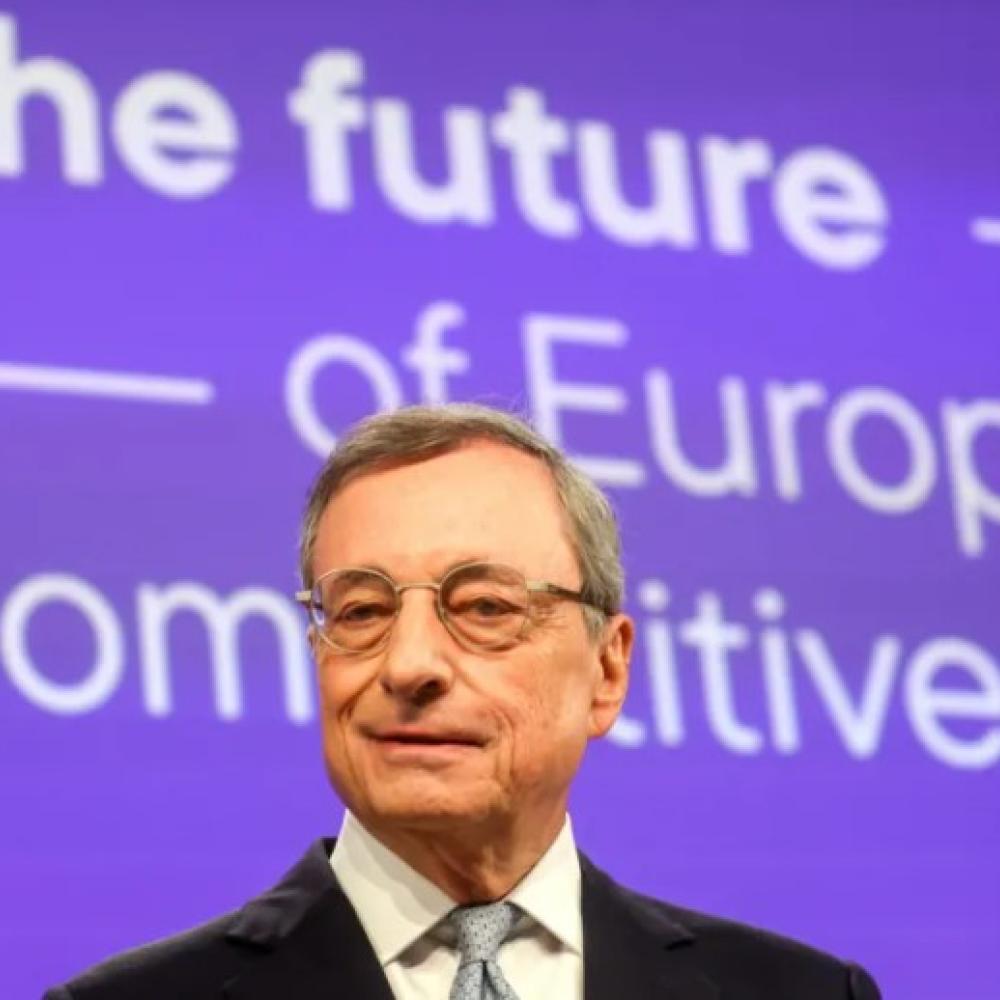
A sigh of relief went through the EU corridors when last week a unanimous agreement was reached on the Ukraine Facility. €50bn in aid for Ukraine looks like an impressive sum but will unfortunately not be sufficient.
Heroic
Since Russian president Vladimir Putin greenlighted the invasion of Ukraine almost two years ago, the Ukraine army is putting up a brave fight against the brutal Russian invader. Far outnumbered in men, material and ammunition, the Ukraine resilience and ferocity in battle is simply heroic. The same goes for ordinary Ukrainian citizens who, certainly in the eastern part of the country, have to deal with immense hardship and the constant threat of Russian missiles and brutality.
Assistance
Ukraine would never have been able to resist and even drive back in a limited way Russian forces without Western assistance. This assistance is two-fold. First, there is the military aspect with the United States and European countries providing the Ukraine army with vehicles, tanks, ammunition and other equipment. Secondly, there is the non-military assistance that is needed to keep the Ukrainian state in operation. Here we’re for example talking about getting salaries and pensions paid and keeping basic government services to the people of Ukraine running. And, of course, part of the overall Ukrainian government budget also goes to military related expenditures.
Not sufficient
The €50bn worth Ukraine Facility which the EU heads of government, including Hungary’s prime minister Victor Orban, agreed upon last week is meant for the second leg of the assistance Ukraine desperately needs. It was indeed very urgent to decide on this assistance because the Ukraine government is on the edge of running out of money. It would have been an unbelievable triumph for Mr. Putin, who is turning the entire Russian economy into a massive war economy, had the EU’s heads of government not been able to address this challenge. But they did. They even committed for four years, which gives extra credibility to the claim that the EU stands squarely behind Ukraine. But if you do the math on this situation, you will immediately figure out that this package will not be sufficient.
22 billion shortfall
First thing to note is that the conservative estimate for Ukraine’s non-military needs are 3 billion euro a month. That means on an annual basis a need for 36 billion euro. The 50 billion euro foreseen in the Ukraine Facility cover 4 years, from 2024 to 2027. Hence, 12.5 billion euro will on average be available for Ukraine each year. The deal between the EU and the United States was that each would take care of half of the Ukrainian needs, meaning 18 billion euro for the EU and the US each. The Ukraine Facility will hence be annually at least 5.5 billion euro short of what the EU’s commitment was. Over the entire period 2024-27 the shortfall is 22 billion euro (4 x 5.5).
Caveat
An important caveat is that the above calculation is a minimum since the 36 billion euro estimate of the annual non-military needs of the Ukraine authorities is a minimal estimate. An even more important caveat is that it supposes that the Americans cross the bridge for their part of the Ukraine’s budget shortfall. That, however, is much in doubt today because President Biden’s plans for assistance to Ukraine have been hijacked by the republicans in an ugly below the belt fight within the American legislative process that has produced complete partisan gridlock.
Frozen assets as collateral for a loan
The reality is that down the road we will have to deal with new requests for military and non-military support for Ukraine. An attractive idea that I have been advancing for some time now is to make use in a creative way of the frozen Russian state assets, worth something like 200 billion euro. Outright confiscation of these assets is for legal, monetary and geopolitical reasons best not done. We can use these frozen assets as collateral for a loan of, say, 150 billion euro. Of course we will have to guarantee for the financial institutions involved that these assets remain frozen as long as the principal of the loan is outstanding. Repayment of the loan would then become a crucial element in the eventual peace negotiations. Also important is to keep the term structure of revolving credit line (loan) in step with the term structure of the earnings realized on the frozen assets. In that way, full coverage of the interest burden on the loan by the proceeds on the frozen assets is more than guaranteed. An extra advantage of this scenario is that it will create an incentive for Vladimir Putin to contemplate an end to his aggression in Ukraine.
Two further remarks on the assistance for Ukraine need to be made here. First, the Ukraine Facility is, despite the solid number of 50 billion euro, actually quite small. The 12.5 billion it translates into every year is equal to 0.065% of the EU GDP. Moreover, the 50 billion consists of two parts, 33 billion in loans and 17 billion in grants or non-repayable subsidies. 17 billion grants over four years amounts to 4.25 billion in grants each year. That is equal to 0.002% of the EU GDP. The Economist was basically right by arguing that the sums involved here are “a mere rounding error in the national accounts” of the member states.
Secondly, we need to make sure that the money made available to Ukraine is used in an efficient and transparent way. The country has a long legacy of murky financial management throughout its government sector. We cannot be naïve in this respect. Adequate mechanisms for supervision and control have to be installed and consistently applied.
Long term lessons
Last but not least, we should draw the appropriate long term lessons from the drama unfolding in Ukraine. Dictators like Vladimir Putin only respect hard power. Containing their wild ambitions require that the EU and its member states step up their defense efforts. This much-needed effort will require years of persistent effort. Given the already excessively high tax burden in most EU member states this extra defense spending needs to be financed through a rescheduling of expenditure priorities. To refuse to take this difficult road is to reduce to just cheap talk the pleas for more “strategic autonomy” for the EU and is also equivalent to give carte blanche to the likes of Vladimir Putin.
Usefull links & downloads
You may also be interested in

Exhausted we stand
The Western world is confronted by challenges the enormity of which has not been seen since the Second World War. We stagger to face these challenges in a state of policy exhaustion, budgetary as well as monetary. Only courageous and decisive reform can turn the tables in our favor.

The Draghi & Schnabel Truth on Trump
The actions of the new Trump administration will have a major impact beyond America’s borders, not least in Europe. Nevertheless, Europe should stop mourning the Democrats’ loss and do what it must do, whatever Trump’s intentions. Money is not the most pressing issue on Europe’s priority list, so Mario Draghi very correctly argues.